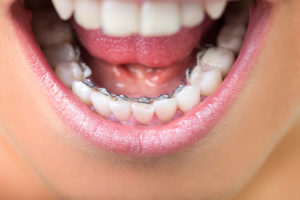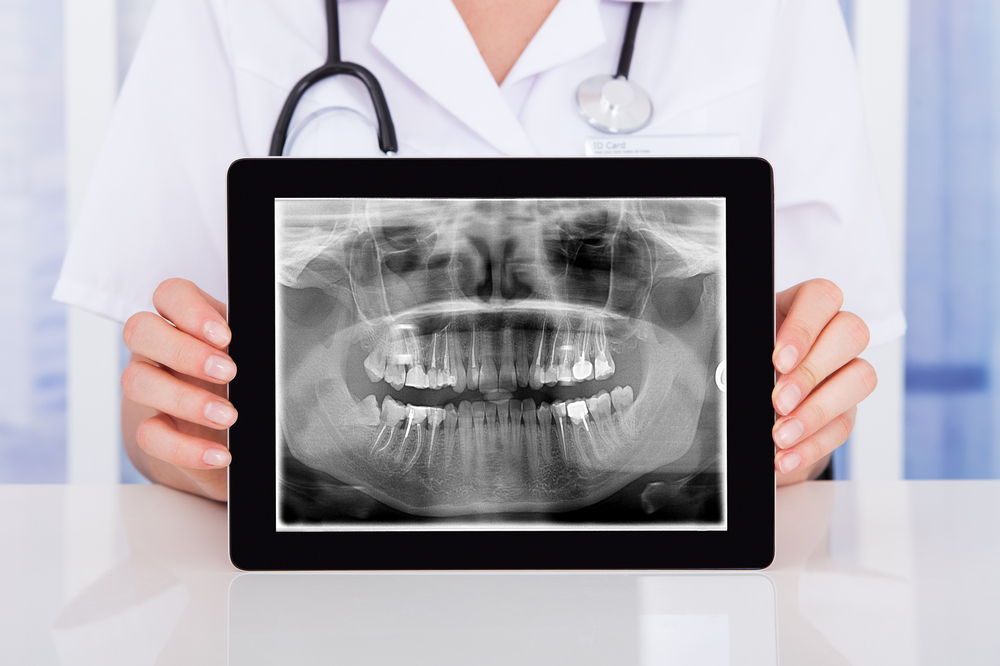Perks of Lingual Braces

As modern technology has improved the tools and appliances that are now used in orthodontic offices, there are more options than ever for patients to get straighter teeth without the look of traditional metal braces. Lingual braces are an ideal option for patients who want orthodontic care but in the most discreet way possible. By using a hidden apparatus on the tongue-side of your teeth, you can get straight, beautiful teeth without sacrificing your confidence. Find out what other perks lingual braces have and what treatment looks like with this guide!
What Are Lingual Braces?
Braces have come a long way since they were first invented, and patients have more options than ever to get the straight teeth they want without sacrificing their confidence. Traditionally, metal braces were the most common type of orthodontic appliance used but were bulky and aesthetically not very pleasing. With the modern technology that has been developed during the last few decades, one type of braces in particular has become more and more common. Lingual braces are an alternative to traditional metal braces and provide utmost discretion as they are almost completely hidden. Unlike traditional braces whose brackets are attached to the front of the teeth, lingual braces are attached to the back side (tongue-side) of teeth, making them practically hidden from view. Fortunately, lingual braces can provide the same results as traditional braces but in a manner that is nearly undetectable. These braces are particularly helpful for patients, especially teenagers, who think braces are unattractive or distracting. Now, more than ever, patients can receive the orthodontic treatment they need without putting it off for aesthetic reasons.
How Lingual Braces Differ From Other Options
While the obvious advantage of choosing lingual braces over other orthodontic appliances deals with the invisibility of the braces themselves, there are other reasons why lingual braces might be the best option for you. Since their invention in the 1980s, lingual braces have slowly gained recognition as a viable option for orthodontic treatment. In fact, very few dentists even offer this technique because special training is needed to perform it. You will still need X-rays, molds and impressions of your teeth to begin treatment, just like you would when getting any other orthodontic treatment. The process is relatively easy to install them, as the brackets are glued to the lingual side of the teeth with a wire and elastics (if needed) to help move the teeth into position. Lingual braces are always on during treatment, so they are constantly shifting your teeth into the correct position without you or others noticing. A similar treatment to lingual braces is called Invisalign, which uses a removable aligner to straighten teeth. Invisalign is a popular option because the aligner is clear and removable so most people don’t notice it’s there, but not everyone is eligible for Invisalign. While Invisalign is a great option, lingual braces tend to be more helpful for patients with specific concerns. Athletes benefit greatly from lingual braces as it helps prevent mouth injuries since the brackets aren’t on the front of the teeth. Musicians, like those who play a wind instrument (flute, trumpet, clarinet, etc.), are also common wearers of lingual braces as they tend to not get in the way as much when playing. Lastly, those patients who don’t qualify for Invisalign typically choose lingual braces as it is the second most discreet option available. Depending on your needs and your orthodontist’s recommendation, you can choose which option you would like to get the beautiful teeth that you want, in the way that you want.
How To Begin Treatment
As mentioned previously, you must be eligible for certain types of orthodontic treatment to receive them. If you are interested in lingual braces, you will first need to visit with your orthodontist to have a consultation and evaluation to determine whether lingual braces are your best option. If you are a candidate, you will have impressions taken of your teeth which will be sent to a lab to create your custom-made brackets and wires. Afterwards, the brackets and wires will be bonded to your teeth to begin treatment. It is important to note that while lingual braces are a great way to keep your treatment unnoticed by others, the braces themselves are more difficult to clean since you can’t see them. For this reason, it is extremely important to clean your teeth thoroughly each day because it will be easier for food to get stuck and bacteria to grow in areas that are hard to see or reach. Another reason why it is important to consult with your orthodontist before choosing lingual braces is the price. Traditional braces typically range from $3,000-7,000, but lingual braces can be anywhere from $8,000-10,000. For patients who are on a budget, this is something to consider as you are in the decision-making process. Check with your dental insurance to see how much they can cover for orthodontic treatment. While many plans don’t offer coverage for adults over 18, many do partially cover children under 18. How much coverage will depend on your provider, so make sure to contact your insurance company for figures and amounts before you or your child begins treatment.
Get Started Today
At Belmar Orthodontics, our team is certified and trained for installing lingual braces. We are ready to help you and your family get the smile you deserve in a way that is most comfortable for you. For a consultation about lingual braces or more information about orthodontic treatment options, call our office at (303) 225-9016. Your journey to a healthier smile starts today, so call now!
Digital Age, Digital X-rays
Digital world, digital x-rays. Why are they better? Not only are they faster, and provide better image quality than traditional, they are also safer and better for the environment. Digital x-rays expose you to 80 percent less radiation than traditional radiography. Digital x-rays are more environmentally-friendly than traditional x-rays because they rely on digital computer uploads for viewing instead of chemical development. Less chemical produced, means less chemicals in our planet! Digital x-rays save storage space and also provide Dr. Hardy with a better tool for diagnosing and treating you. Unlike traditional x-rays, digital x-rays can be enlarged, transposed, and highlighted to better show what is going on in your mouth!
Digital X-Rays Are Safer
One of the great advantages of digital dental x-rays is that they have the ability to take multiple intra-oral x-rays in minimal time with far less radiation exposure than conventional radiography–up to 85 percent less radiation exposure to be exact. Conventional radiography systems are unable to provide you with these results. You are not only limited to the number of images you can gather during a radiography session, but you are exposed to the radiation levels for longer periods of time.
Improved Image Quality Aid in Accuracy
Digital oral x-rays are taken using a small sensor which records the image of your teeth and transmits it to our computer. The computer is then able to broadcast a highly-detailed image of your mouth, teeth and tissues. This digital image can be enhanced, enlarged, sharpened, colorized, or displayed as a negative to more accurately diagnose dental conditions you may have and to help Dr. Hardy determine the precise treatment you need. These high-tech capabilities are impossible with conventional film x-rays.
Progress Tracking and Digital Storage
In an age where we are ever trying to reduce, recycle and reuse, digital x-rays allow us to store your dental images electronically in your own electronic patient file that can be called up and consulted at any time without taking up more space or wasting paper. Chemicals that were needed in the past to process conventional x-rays are eliminated in the process also helping the environment and reducing waste. X-rays also help your doctors better gauge your progress during treatment because they can be superimposed with images taken earlier to visually compare the progress/changes during your treatment. With this powerful, new tech, you and your doctors can monitor: tooth movement, bone loss or growth, bite changes and decay. Digital x-rays involve you more in your treatment and supports what we do for you.
Helping Our Environment
Like we referred to earlier, digital x-rays help our environment by eliminating the need for toxic x-ray fixers. According to the Eco Dentistry Association, every year, dental practices generate 28 million liters of toxic x-ray fixer. Conventional x-ray fixers contain chemicals such as Ammonium Thiocyanate and Boric Anhydride–which can be extremely hazardous if inhaled or ingested. Our efforts to go digital protect our environment from the negative effects that harsh chemicals can have on it helping to make it a better, healthier place for us all. Surprisingly, even with the knowledge we have about the dangers that conventional x-rays can have on our environment (and on ourselves) only 25% have switched to using digital technology. Belmar Orthodontics is dedicated to progress and offering our patients products and methods they can rely on.
Less Time in Our Treatment Chair
One of the other great advantages of digital x-rays is their ability to take multiple images at once, and then display them instantly. We know you have places to be and things to do. The last thing you need is to spend valuable time having x-rays taken, waiting for them to be developed, and then waiting for them to be analyzed.
Schedule a Consultation to Learn More
The best way to find out how Belmar Orthodontics superior orthodontic technology can benefit you is to schedule an appointment for an in-office consultation. Dr. Hardy can talk with you about your goals and come up with an effective treatment plan to help you achieve them. Contact our office today at 303.225.9016. We are excited to meet you and help you reach your smile goals!

